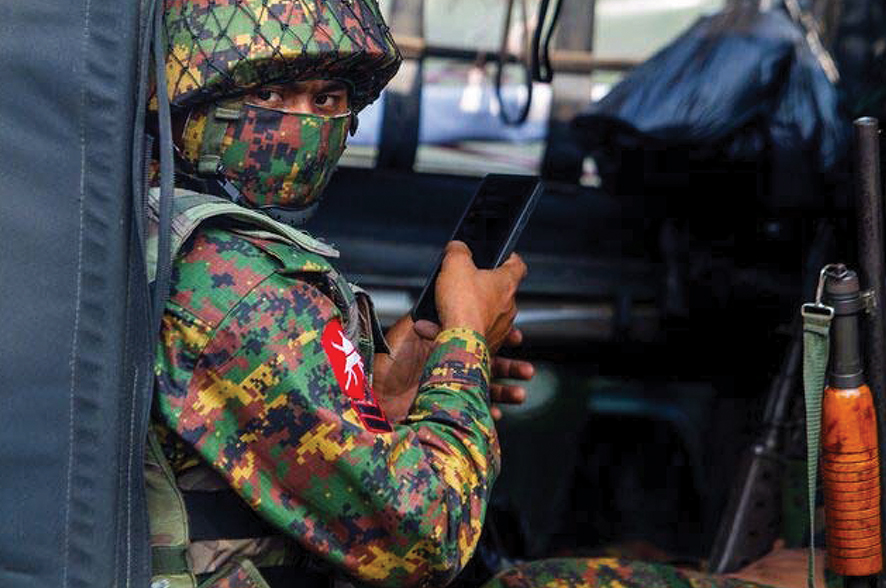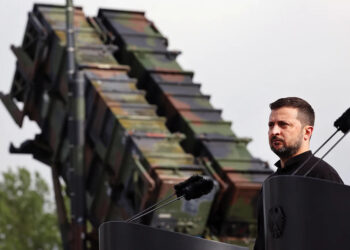The role of social media, digital messaging platforms, and the ubiquity of personal smartphones in modern warfare has fundamentally transformed the landscape of conflict reporting and intelligence gathering, offering both unprecedented opportunities and significant challenges. As evidenced by recent conflicts in Ukraine, Gaza, and the Sahel, these digital platforms are no longer secondary or peripheral tools; they are central to both the conduct and the perception of warfare. Open-source intelligence (OSINT) derived from social media and the digital footprints of combatants has increasingly become a critical element in understanding not just the tactical and strategic dimensions of conflicts, but also the informational battles that accompany them.
The ongoing war in Ukraine stands as perhaps the most illustrative example of how social media and smartphones have revolutionized conflict reporting and intelligence operations. When Russia launched its full-scale invasion of Ukraine in February 2022, global newsrooms, intelligence agencies, and defense analysts did not have to wait for official military briefings or embedded reporters to describe the unfolding battlefield. Instead, a torrent of smartphone footage, satellite images, and geolocated tweets provided a near real-time chronicle of the war’s progression.
The rise of Telegram in Ukraine and Russia has been particularly notable. Pro-Ukrainian and pro-Russian channels regularly post updates about troop movements, equipment losses, and airstrikes, often faster than official news outlets. These posts—often from civilians on the ground—are quickly analyzed by OSINT experts and shared with the broader public. For example, during the battle for Kyiv, citizens used their smartphones to film and post images of Russian convoys, which were subsequently geolocated by OSINT analysts to provide precise locations. This open-source geolocation played a crucial role in informing Ukrainian defense tactics. The conflict has produced a trove of OSINT materials, from intercepted communications on platforms like Zello to smartphone videos that have been cross-referenced with satellite data.
Beyond Ukraine, Israel’s operations in Gaza also reflect the growing integration of digital platforms into military strategy and media narratives. During the recent series of conflicts, and indeed the ongoing combat operations, between Israel and Hamas, the social media landscape became a battleground for hearts and minds. Both sides engaged in sophisticated information campaigns, aimed not only at their respective domestic populations but at a global audience. Hamas utilized Telegram and WhatsApp to release footage of missile strikes, often exaggerating their effectiveness, while Israel responded with its own well-oiled social media machine, using Twitter and YouTube to showcase its Iron Dome interceptions and the precision of its airstrikes.
Israeli Defense Forces (IDF) soldiers themselves played a role in this digital war. Some soldiers, particularly younger conscripts, have posted footage of combat operations on TikTok and Instagram, giving the world a front-row seat to their experiences. This has allowed global audiences to see the conflict through a very personal, often emotional, lens. However, this openness has also presented vulnerabilities. Analysts have noted instances where footage posted online revealed Israeli troop movements, potentially endangering operational security. Conversely, Hamas and other militant groups have used digital messaging apps like Signal and encrypted communication channels to coordinate operations while avoiding detection from Israeli intelligence.
In the Sahel, a region plagued by insurgencies and fragile governments, the rise of social media as a battlefield tool has mirrored global trends but with distinct regional characteristics. Insurgent groups such as Boko Haram, al-Qaeda in the Islamic Maghreb (AQIM), and Islamic State affiliates have weaponized social media to both recruit followers and spread their ideologies. WhatsApp and Telegram have become key communication tools for coordinating attacks, with insurgents often moving faster than government forces thanks to real-time, encrypted messaging.

For government forces, social media platforms offer a critical tool for countering these insurgent narratives. For example, the French military has used Twitter to document its operations in Mali, seeking to legitimize its presence and win support among the local populace. In 2020, as France faced growing calls to reduce its military footprint in the region, French officers frequently posted updates and shared images of captured militants or seized weapon caches on social media. This was part of a broader information strategy to counter anti-French sentiment driven, in part, by insurgent messaging online.
The ability of insurgent groups to shape narratives in the Sahel is compounded by the lack of formal media infrastructure in the region. With limited access to traditional news outlets, many locals rely on social media platforms for their understanding of the conflict. In this context, the lines between OSINT and propaganda become increasingly blurred, as both state actors and insurgents vie for control of the digital narrative.
While these platforms have provided opportunities for intelligence gathering and real-time reporting, they have also introduced significant challenges. Disinformation has become a persistent problem in all of these conflicts, with false reports often circulating widely before being debunked. In Ukraine, for example, both pro-Russian and pro-Ukrainian actors have engaged in disinformation campaigns aimed at shaping international opinion. Russia’s use of deepfakes—doctored videos that appear to show Ukrainian leaders surrendering or fleeing—has been particularly troubling. Meanwhile, in Gaza, misleading images and exaggerated casualty figures are routinely posted online, complicating the task of journalists and analysts trying to report accurately on the conflict.
Despite these challenges, the influence of social media on conflict reporting and intelligence is undeniable. According to a 2022 Pew Research Center study, 48% of U.S. adults say they get their news from social media “often” or “sometimes,” while 29% report that they “rarely” use these platforms for news. Among younger audiences, these numbers are even higher, with 42% of people aged 18 to 29 reporting that they regularly get their news from social media. These trends are mirrored in Europe, where a 2022 Reuters Institute report found that 53% of people use social media to follow the war in Ukraine.
For military officials and intelligence agencies, this new media landscape represents both a boon and a burden. On one hand, the vast amounts of open-source data available on platforms like Twitter, TikTok, and Telegram offer valuable insights into enemy tactics, troop movements, and public sentiment. On the other hand, the sheer volume of information—much of it unverified—can create confusion and lead to intelligence failures.
For instance, during the early stages of Russia’s invasion of Ukraine, there were numerous reports on social media of Russian defections and mass surrenders. While some of these reports were later verified, others proved to be exaggerated or false, creating an inflated sense of optimism among Ukrainian supporters and potentially influencing military decisions on the ground.
The global proliferation of high-quality smartphones with impressive camera resolution and relevant social media platforms has irrevocably altered the way wars are fought, reported, and understood. As OSINT continues to evolve, it will become even more integral to military operations and conflict journalism. Governments and militaries around the world are increasingly incorporating social media monitoring into their intelligence processes, and the lessons learned from Ukraine, Gaza, and the Sahel will undoubtedly shape future strategies. As conflicts continue to play out both on the ground and in the digital realm, understanding how to navigate this complex information environment will be critical to success on the modern battlefield.
Defense Sector Review is an analysis of the regional and relevant security and defense issues by the team at Mercury Strategic Services, a defense consulting, training, and advisory company based in Tbilisi, Georgia and at www.mercstrat.com














